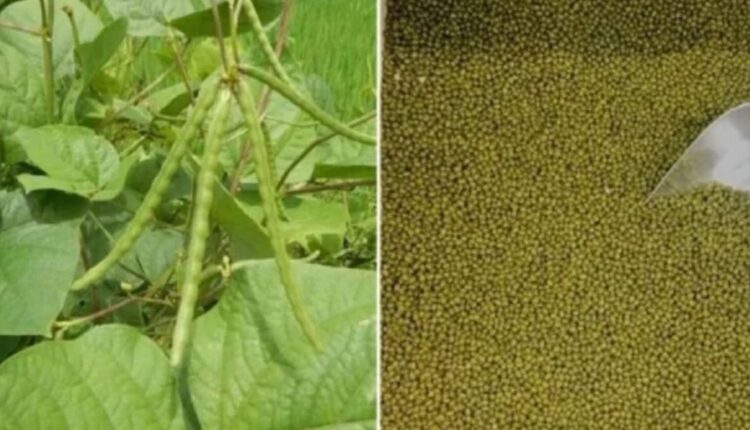Moong Cultivation: Why is it beneficial to cultivate moong in summer?
Know when and how to cultivate moong
Moong Cultivation | Moong is the main pulse crop of India. It is rich in protein, and along with lentils, it is also used in making many products like vegetables, papad, namkeen, and sweets. Moong dal is considered very nutritious as it gets digested quickly. This is why doctors also recommend eating moong dal in case of stomach ailments. Although moong cultivation is done in all three seasons, it is more beneficial to cultivate moong in summer because, at this time, there is less possibility of disease in the crop. The cultivation of moong in the summer increases the amount of nitrogen in the field, so the production of other crops is also good.
Soil and Climate in Moong Cultivation
A hot climate is considered good for moong cultivation. Although moong can be successfully cultivated in all types of soil, medium loamy or sandy soil is best for it. It is also necessary to have a proper drainage system, and the pH value of the soil should be 7-8.
When to Sow?
Moong should be sown from March to April’s first or second week. Late sowing affects production. Soak moong in water before sowing. This will cause the bad and light seeds to rise and the good seeds to remain at the bottom. Sow the same seeds for a good harvest. After soaking, dry the seed and treat it with thyrom. Four grams of thyrom is required for one kg of seed. Fertilizer is also necessary for a good crop. When sowing, apply 6 to 8 kg Nitrogen and 16 kg Phosphorus in 1 acre. Apply 13 to 17 kg Urea and 100 kg Single Super Phosphate at the time of sowing.
Benefits of Moong Cultivation in Summer
- In the summer season, there is less outbreak of weeds in the moong crop.
- Due to less moisture, the effect of diseases and insects also reduces.
- The crop gets ready early so that damage caused by rain can be avoided.
- Soil fertility increases.
- Apart from paddy, wheat, ridge gourd, potato, mustard, peas, sugarcane, etc., the field becomes empty in the month of March, in such a situation, the natural resources are put to good use by the cultivation of moong.
Sow these varieties of Moong in the Summer Season
Pusa Baisakhi – This long bean variety gets ready in 60-70 days and gives 8-10 quintals per hectare yield.
Mohini – This variety gets ready in 70-75 days and yields 10-12 quintals per hectare.
Pant Moong 1 – Ready in 65-75 days, the yield potential of this variety is 10-12 quintals per hectare.
ML 1 – This mung bean with small green colored seeds is ready in 90 days and gives 8-12 quintals per hectare yield.
Varsha – This variety gets ready in 60 days and the yield potential is 10 quintals per hectare.
Sunaina – This variety also gets ready in just 60 days and its yield potential is 12-15 quintals per hectare. This variety is suitable for summer season.
Jawahar 45 – It is also called Hybrid 45. This variety gets ready in 75-85 days and yields up to 10-13 quintals per hectare.
Contact us – If farmers want to share any valuable information or experiences related to farming, they can connect with us via phone or whatsapp at 9599273766 or you can write to us at “[email protected]”. Through Kisan of India, we will convey your message to the people, because we believe that if the farmers are advanced then the country is happy.
You can connect with Kisan of India on Facebook, Twitter, and Whatsapp and Subscribe to our YouTube channel.



